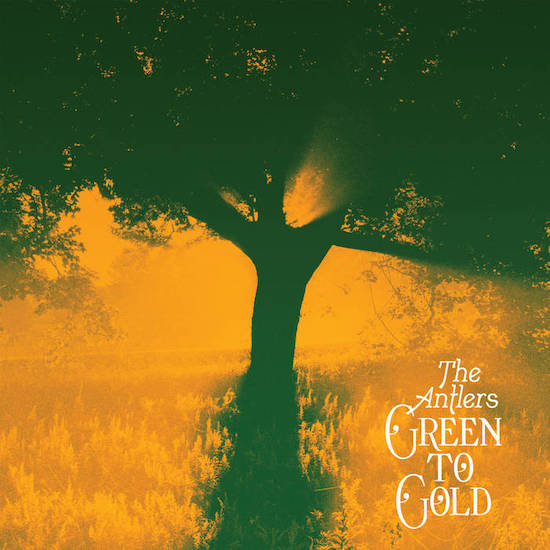There is a short silence after you press play on the Antlers’s new Green to Gold. A few seconds of nothing before you start hearing a low hissing. An echoed pair of notes follow, then a simple beat, and, finally, the guitar. A crescendo leading fo a full, instrumental piece – not with a burst, but with a delicate rise, reaching its gentle climax to quieten again. It feels as if we’re hearing the sound of the sun following its path on the day arc, with its strong sense of awakening and mild lightness.
This is how the listener is introduced to Green to Gold, the Antlers’ first album after a seven-year hiatus. Seven years that saw the band’s mastermind Peter Silbermann dealing first with a temporary hearing impairment that caused him to reconsider his whole life and career – and which ended up inspiring his solo record Impermanence – and subsequently with the lesion of a vocal cord that needed surgery to be fixed. A scenario that drained the songwriter to the point that he faced the idea of putting aside music forever, and find a different purpose in life than art. Instead, he embarked on an acoustic tour to celebrate the tenth anniversary of the band’s debut Hospice and found a new, renovated connection with his audience. A spark that re-ignited the songwriter’s fire to create, with the help of his friend and drummer, Michael Lerner.
Green to Gold sees Silbermann once again chronicling his life – this time though recounting recent years of rejoicing and rebirth, with airy melodies and wide atmospheres. The textural mass is a sheer canvas of perfectly woven sounds and voice. The constant sense of apnoea and claustrophobia saturating all his previous work is gone, leaving space for a rediscovered breathing. Sprouting, springing, beaming, the lyrics follow the course of the seasons, paralleling the introspective thoughts of a man’s healing and the ever-beguiling cycle of nature. There is a light that filters through the notes, irradiating the sonic landscape like sun rays at dawn. It is, again, an instrumental track that closes the album and leads the listener out of this enveloping experience. Its ambiance is richer than before, with some distant psychedelic reverb peeping out as it builds up to the anticlimax. The balance is perfect. Life can start anew.


